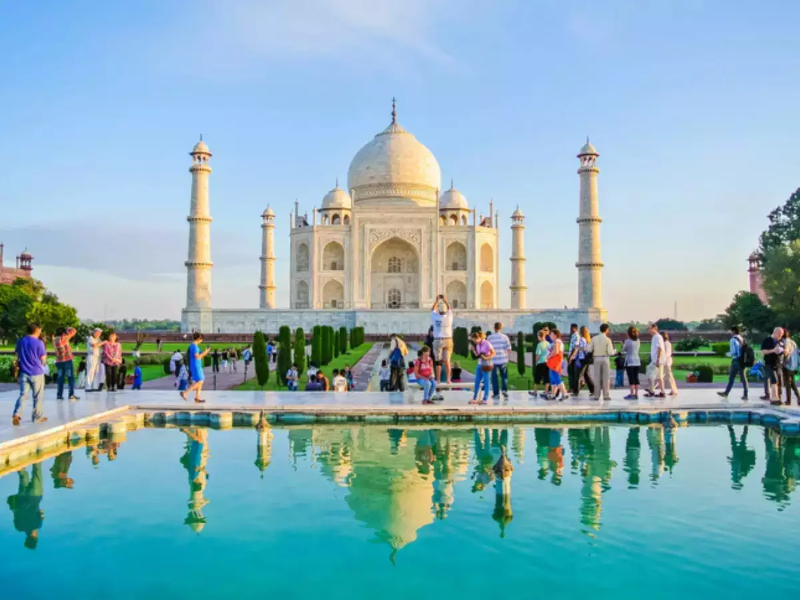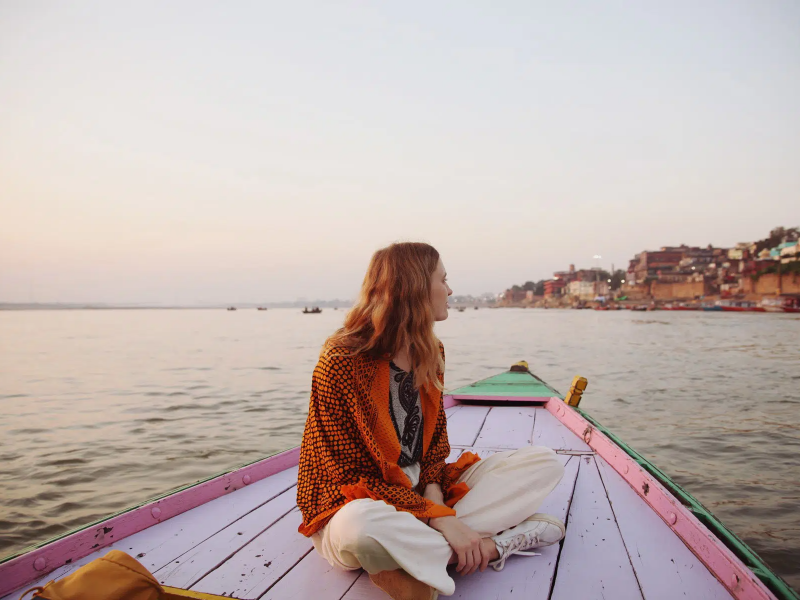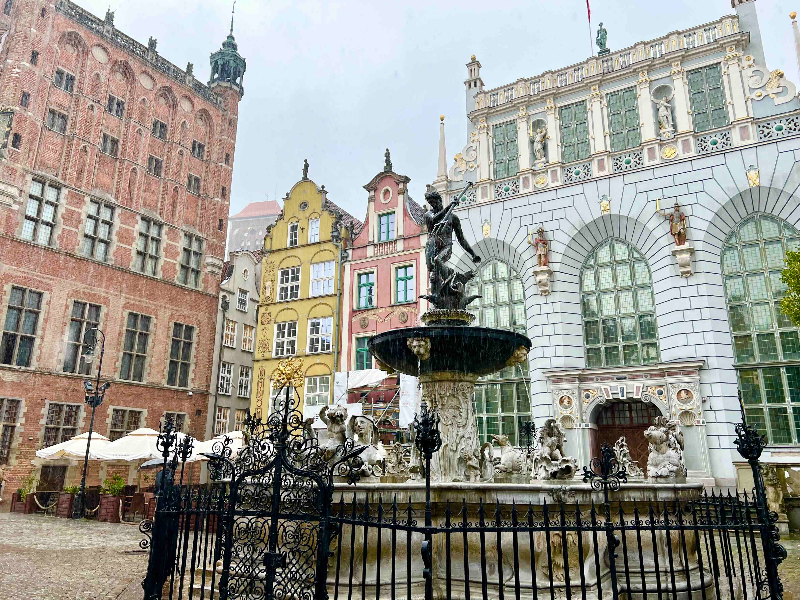
India is a land of contrasts, vibrant culture, and unparalleled beauty that’s made it one of the top destinations for solo female travelers . But it’s also a country that can seem overwhelming, especially on your first visit. From captivating temples to buzzing markets, India offers experiences that touch your soul.
This guide is tailored to solo female travelers, offering you essential tips, practical advice, and cultural insights to help traveling in India solo feel both safe and magical.
Why Choose India for Solo Travel?
Female solo travel in India is more than just a holiday—it's a life-changing experience. Many spiritual seekers and solo travelers from the West, like Mark Twain and The Beatles, have been deeply moved by their time here. India is a particularly great choice for those seeking self-discovery and spiritual transformation.
Here’s why solo travel in India shines:
- Warm and Friendly Locals – Traveling alone allows you to connect authentically with local communities.
- Spiritual Enrichment – From Rishikesh to Varanasi, India’s spiritual hubs are ideal for journeys of self-discovery.
- A Variety of Experiences – Whether you’re trekking in the Himalayas or relaxing on a Kerala beach, India has it all.
Must-Visit Spiritual Destinations:
- Rishikesh – The yoga capital of the world
- Varanasi – A city of ancient rituals and spirituality
- Pushkar – Home to one of the rarest Brahma temples
- Tiruvannamalai – Known for its spiritual significance and tranquility
- Dharamsala – The home of the Dalai Lama
Is India Safe for Solo Female Travelers?

The first question on many people’s minds is, "Is India safe for solo female travelers?" The answer is yes—with the right preparation. Like any country, India presents unique challenges, but by following the tips below, you can have an incredible solo trip in India safely.
Safety Tips for Female Solo Travel in India:
- Stay Aware of Scams – Be cautious of overly helpful strangers. If someone tells you your hotel “burned down,” it’s likely a scam.
- Get a Local SIM Card – Apps and WhatsApp are essential for communication and navigation.
- Dress Modestly – Cover your shoulders, chest, and legs to avoid unwanted attention, especially outside touristy areas.
- Use Daytime Arrivals – Wherever possible, plan your arrivals during daylight hours.
- Start with a Tour – A group or custom solo tour is a great way to build confidence if it’s your first time in India.
- Trust Your Instincts – If something feels off, leave the situation immediately.
Remember, confidence, awareness, and preparation are key to fostering a safe and rewarding experience.
Tips for Planning Female Solo Trip in India
India’s sheer size and diversity make it both exciting and challenging to plan your travel alone in India. With these tips, you can organize a smoother, more memorable experience.
When to Visit India
India has three primary seasons:
- Winter (October to March) – The most comfortable time for travel, with cooler temperatures.
- Summer (April to June) – This season can be very hot, so it’s best to head to the mountains.
- Monsoon (June to September) – Heavy rains create lush landscapes, but some regions may experience flooding.
Choosing Destinations
The variety in India is astonishing. Where you travel depends on your interests and the time of year.
Best Destinations in North India:
- Delhi, Agra, Jaipur (Golden Triangle): History and stunning monuments
- Udaipur and Jaisalmer: Romantic and desert landscapes
- Amritsar: Home to the Golden Temple
- Rishikesh and Dharamsala: Spiritual retreats and mountain views
Best Destinations in South India:
- Mumbai: A gateway to the tropical south and Goa
- Goa: Perfect for beach lovers and relaxation
- Kerala: Known for its peaceful backwaters and lush greenery
- Pondicherry: French-influenced architecture and culture
Practical Tips for First-Time Travelers

India can be a significant culture shock, especially for first-time Western travelers. Understanding local etiquette, customs, shopping, and dining is essential. Here are a few tips to help you navigate this vibrant and complex culture.
1. Avoid “Delhi Belly”
A common concern for travelers in India is the infamous "Delhi Belly." While there's no foolproof method to guarantee you'll avoid it entirely, here are some precautions you can take to significantly reduce your risk:
- Drink Clean Water: Opt for bottled water, ensuring the seal is intact. Alternatively, use water purification tablets or a portable water filter. Be cautious of tap water, even in reputable establishments.
- Avoid Ice and Watery Sauces: Ice is often made with tap water, so it's best to avoid it. Similarly, be wary of watery sauces, as they may be diluted with non-potable water.
- Eat Fresh, Cooked Food: Choose restaurants and food stalls that prepare food fresh and cook it thoroughly. Ensure that the food is served hot.
- Eat Fruit That Is Peeled: Fruits with edible skins should be avoided unless you can thoroughly wash and peel them yourself. Opt for fruits like bananas, oranges, or mangoes that you can peel.
2. Staying Hydrated
Staying Hydrated Safely is super important, especially with the Indian heat!
- Bottled Water: Always check that the seal is unbroken when buying bottled water to ensure it's safe.
- Filtered Water: Carry a reusable water bottle and refill it with filtered water whenever possible. Most hotels, restaurants, and even homes in India have RO (reverse osmosis) filters, making the water perfectly safe to drink.
- Fresh Lime Soda: On those scorching days, a fresh lime soda is your best friend! Made with soda water, freshly squeezed lemons, and a dash of salt and sugar, it's incredibly hydrating and absolutely delicious.
3. Navigating Bathrooms
Traditionally, toilet paper isn't the norm in India, although you'll increasingly find it in upscale hotels, restaurants, and homes. However, it's best not to rely on it being available.
- Carry Essentials: Always keep a small tissue pack and hand sanitizer with you.
- Water is Key: Most bathrooms are equipped with either a water hose (affectionately known as a "bum gun") or a jug for washing with water. Simply wash and then pat dry with tissue paper.
- Trash the Paper: Please, please don't flush toilet paper down the toilet! Indian plumbing systems aren't designed to handle it. Instead, dispose of used toilet paper in the trashcan (often called a "dust bin" in India).
4. Mastering Train Travel
Traveling by train is an amazing way to experience India and meet locals. While trains can be crowded and sometimes a bit grimy, a sense of adventure will take you far! As a solo traveler, I've explored much of India by train. Here's what you need to know:
- Book in Advance: Trains often sell out weeks ahead of time, so book your tickets well in advance.
- Booking Challenges: It's becoming increasingly difficult for foreigners to use credit cards due to India's OTP (one-time password) security system. Consider asking a local or travel agent to book your tickets.
- Navigating the System: The Indian train system is vast and can be confusing at first. Give yourself time to understand it.
-
Best Train Options:
- Vande Bharat Express
- Rajdhani
- Shatabdi
- Class of Travel: Book 1AC (first class air conditioning), 2AC (second class air conditioning), EC (executive chair car), or CC (chair car), depending on the train.
-
Overnight Essentials: If you're on an overnight train:
- Use a cable lock to secure your luggage to the bed frame.
- Pack a small bag with essentials like a toothbrush, tissue paper, hand sanitizer, socks, earplugs, and a flashlight.
- While bedding is provided, consider using your own sheet sleeping bag for hygiene.
- Further Tips: You can find more tips about train travel in India online.
5. Booking Accommodation
Booking accommodations in India is now easier with platforms like Agoda, Booking.com, and Airbnb. However, it's important to be extra cautious, as these platforms may not be as reliable as they are in other countries. Here's what to keep in mind:
- Be Diligent: Watch out for fake reviews and even misleading photos.
- Location, Location, Location: Ensure your accommodation is in a safe and tourist-friendly area.
- Delhi Recommendation: In Delhi, I highly recommend staying in the leafy, prosperous South Delhi.
- Accommodation Options: You'll find upscale hostels, charming guest houses, small hotels, and big brand hotels like Marriott and Hyatt to choose from.
6. Shopping and Bargaining
India is truly a shopper's paradise, brimming with beautiful things that will tempt you at every turn. However, especially if it's your first solo trip to India, resist the urge to make impulsive purchases. Here's some advice to shop smart:
- Avoid Impulsive Buys: Chances are, you'll see something similar again during your trip.
- Quality Matters: Take the time to assess the quality of products to avoid buying items that won't last.
- Authentication is Key: If you're buying expensive items like jewelry, rugs, pashmina shawls, or furniture, get them authenticated before making a purchase.
- Beware of Scams: Many unscrupulous salespeople prey on naive tourists, selling fakes.
- Commission Shops: If you hire a guide or driver cheaply, they may take you to commission shops where you'll be overcharged.
- Bargaining is Expected: You can haggle at outdoor markets and street bazaars, but many upscale stores have fixed prices.
- Haggling Tips: Offer 50% of the asking price and gradually negotiate. Remember, haggling in India is an art form and should be done in a friendly and fun manner.
Solo Travel for a Transformative Journey
Traveling solo in India doesn’t just broaden your horizons—it transforms you. Whether you’re lounging on a beach in Kerala or standing in awe before the Taj Mahal at sunrise, India will challenge, inspire, and shape you. Approach India with an open heart, take precautions, and allow yourself to fully immerse in the culture. This vast, diverse land could just become the most unforgettable chapter of your travel story.




